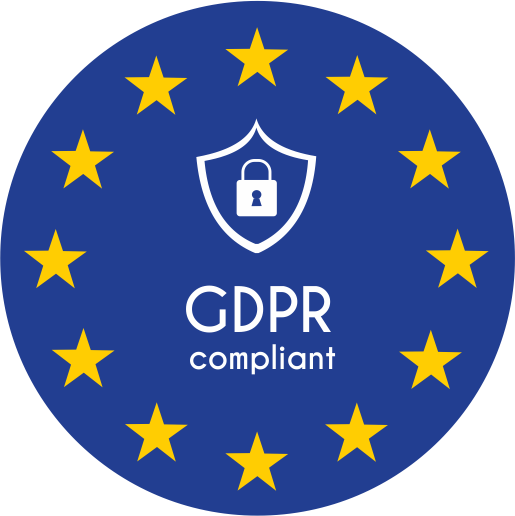 Phishing attacks have become more sophisticated than ever in 2025. Cybercriminals now use AI to craft convincing emails that mimic your trusted contacts perfectly. They're targeting small businesses more aggressively because they know you might not have enterprise-level security budgets.
Phishing attacks have become more sophisticated than ever in 2025. Cybercriminals now use AI to craft convincing emails that mimic your trusted contacts perfectly. They're targeting small businesses more aggressively because they know you might not have enterprise-level security budgets.
But here's the good news: protecting your inbox doesn't require expensive solutions or a computer science degree. You just need to know what to look for and implement a few key safeguards. Think about what's connected to your email accounts – your banking, your customer data, your business operations. That's why phishing avoidance should be your top priority this year.
Let's dive into practical steps you can take today to bulletproof your inbox against these increasingly clever attacks.
Set Up Email Authentication to Block Impersonators
Email authentication is your first line of defense against domain spoofing. When someone tries to send emails pretending to be from your business, these protocols will catch them.
SPF (Sender Policy Framework) tells email servers which IP addresses are allowed to send emails from your domain. Think of it as a guest list for your domain – only approved senders get through.
DKIM (DomainKeys Identified Mail) adds a digital signature to your outgoing emails. It's like a tamper-proof seal that proves the message really came from you and wasn't altered in transit.
DMARC (Domain-based Message Authentication, Reporting, and Conformance) combines SPF and DKIM, then tells other email servers what to do with emails that fail these checks. You can set it to quarantine suspicious emails or reject them entirely.
Setting up these protocols requires adding DNS records to your domain. If that sounds intimidating, most hosting providers or IT consultants can handle this quickly. The investment pays off immediately – you'll see fewer spoofed emails reaching your contacts and customers.
Recognize the New Generation of Phishing Emails
Today's phishing emails are getting scary good at mimicking legitimate communications. AI helps scammers create perfect grammar, use your company's writing style, and even reference recent events or conversations.
Watch for these red flags that still give away phishing attempts:
Suspicious sender addresses often use lookalike domains. Instead of "fedex.com," you might see "fedx-support.com" or "fedex-delivery.net." Always check the actual sender address, not just the display name.
Urgent language designed to bypass your critical thinking. Phrases like "immediate action required," "account will be closed," or "verify within 24 hours" should trigger your skepticism.
Generic greetings like "Dear Customer" instead of your actual name. Legitimate businesses usually personalize their communications, especially for account-related messages.
Mismatched links where the displayed text says one thing but the actual URL leads somewhere else. Hover over links before clicking to see where they really go.
Unexpected attachments requiring immediate download or execution. Be especially wary of .zip files, .exe files, or documents with embedded macros from unknown senders.
Implement Smart Behavioral Practices
Your daily email habits matter more than any security software. Small changes in how you handle emails can prevent most successful phishing attacks.
Never click links in emails unless you absolutely trust the sender. When in doubt, open a new browser window and navigate to the company's website directly. This simple practice stops most credential theft attempts cold.
Verify suspicious requests through alternative channels. If your "boss" emails asking for urgent wire transfers or sensitive information, pick up the phone and confirm. Scammers count on you following email instructions without verification.
Keep your software updated. Email clients, browsers, and operating systems regularly patch security vulnerabilities that phishers exploit. Enable automatic updates whenever possible.
Use different passwords for different accounts. When one account gets compromised, you don't want attackers accessing everything else. Password managers make this easier by generating and storing unique passwords for each service.
Deploy Multi-Factor Authentication Strategically
Multi-factor authentication (MFA) blocks most phishing attacks even when criminals steal your password. But not all MFA is created equal in 2025.
Avoid SMS-based authentication when possible. Scammers can intercept text messages or use social engineering to redirect your phone number. It's better than nothing, but other options provide stronger protection.
App-based authentication using Google Authenticator or Microsoft Authenticator offers better security. These generate time-based codes that work even without internet connectivity.
Hardware security keys like YubiKey provide the strongest protection against phishing. They use cryptographic proof that can't be phished, even by sophisticated attacks. For businesses handling sensitive data, this investment pays for itself quickly.
Choose the Right Email Security Tools
Modern email security goes beyond basic spam filtering. AI-powered solutions can detect subtle patterns that humans might miss.
Advanced threat protection services analyze email content, sender behavior, and link destinations in real-time. They catch zero-day phishing attempts that haven't been reported yet.
Email sandboxing opens suspicious attachments in isolated environments to check for malware before they reach your inbox. This protects against document-based attacks that bypass traditional antivirus.
User reporting tools make it easy for your team to flag suspicious emails. Many security platforms learn from these reports, improving protection for everyone.
Link rewriting services intercept clicks on suspicious URLs and scan them before allowing access. This provides a safety net when users click without thinking.
Train Your Team Without Boring Them
Security awareness training works best when it's relevant and engaging. Skip the generic presentations and focus on real scenarios your business might face.
Run phishing simulations that mimic actual threats targeting your industry. Banking clients might see fake loan notifications, while retail businesses could see shipping updates. Make the training relevant to daily operations.
Create a no-blame reporting culture. Team members should feel comfortable reporting suspicious emails without fear of embarrassment. Praise people for being cautious – it's exactly the behavior you want.
Share recent examples of phishing attempts targeting similar businesses. Real-world cases are more memorable than theoretical scenarios.
Keep sessions short and focused. Fifteen-minute monthly updates work better than annual marathon training sessions. People retain information better in small, digestible pieces.
Protect Your Business Email Specifically
Business email faces unique threats that personal email doesn't encounter. Attackers research your company structure, recent news, and business relationships to craft targeted attacks.
Business Email Compromise (BEC) attacks target financial processes. Scammers impersonate executives or vendors to trick employees into wire transfers or credential sharing. Always verify payment requests through secondary channels.
Supply chain phishing uses compromised vendor accounts to attack customers. Even trusted partners can become unwitting attack vectors. Maintain healthy skepticism even with familiar senders.
CEO fraud targets employees with fake urgent requests from leadership. Attackers study your organizational chart and communication patterns to make requests seem legitimate.
Keep Your Defenses Current
Phishing tactics evolve constantly, so your protection strategies must evolve too. What worked last year might not catch this year's threats.
Monitor your email authentication reports. DMARC generates reports showing who's trying to send emails from your domain. Review these monthly to catch impersonation attempts early.
Update your security awareness training quarterly with new threat examples. Cybercriminals adapt their tactics based on what works, so your team needs to stay current.
Test your backup and recovery procedures. Even with perfect prevention, some attacks might succeed. Regular testing ensures you can recover quickly without paying ransoms or losing critical data.
Review and update your incident response plan. Everyone should know who to contact and what steps to take when phishing attacks succeed. Quick response can minimize damage significantly.
Take Action Today
Phishing avoidance isn't something you can set up once and forget. It requires ongoing attention and regular updates. But the effort protects your business reputation, customer data, and financial security.
Start with email authentication – SPF, DKIM, and DMARC records provide immediate protection against domain spoofing. Then implement multi-factor authentication on critical accounts. These two steps alone will block most common phishing attacks.
Train your team to recognize and report suspicious emails. Create processes for verifying unexpected requests through alternative communication channels. The combination of technology and smart human behavior creates a robust defense against even sophisticated attacks.
Remember, cybercriminals are running businesses too. They target victims who look like easy marks and move on when defenses are strong. Make your business a hard target, and attackers will focus their efforts elsewhere.
For additional technical help with email security implementation, check out our email security resources for step-by-step guidance on protecting your business communications.



 European Union General Data Protection Regulation Compliant
European Union General Data Protection Regulation Compliant